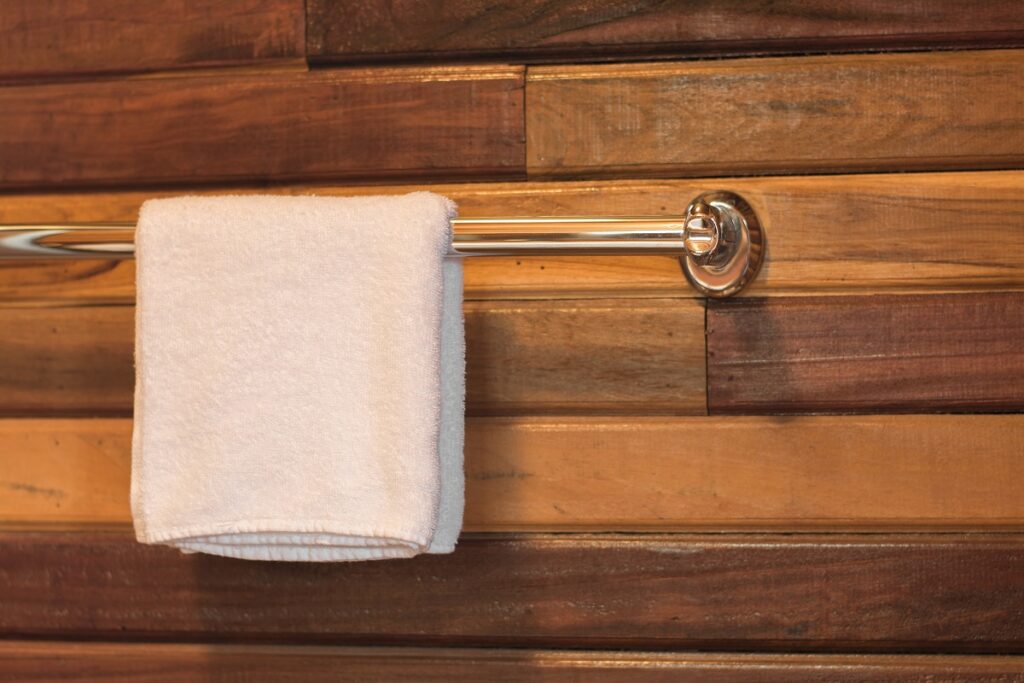Example of expert content available in the vipHome.app
By Laurie Smith, vipHome.App Brand Ambassador
Home has a deep meaning for many of us. It’s where we have raised our families, shared memories, survived struggles and celebrated joys. It’s a place that is safe, despite the sometimes chaotic world around us. That’s why aging in the comfort of home is a relevant topic.
Sometimes aging in a current home isn’t possible, perhaps it’s too large and maintenance is overwhelming. If so, downsizing and creating a new home to age in can be an exciting prospect. Whether you are staying in your home of 40 years or creating a new one, the idea of aging in place, as opposed to a retirement facility, has become increasingly attractive.
Evaluate the safety of the home

If you are considering aging in place or have a relative or parent doing so, first consider a home safety assessment. This may simply be a walk-through with a notepad to evaluate challenges to solve.
- How are the traffic patterns in the home? Are there clear paths through rooms, or is there obstructive furniture or potential to trip on an area rug?
- Is a garage floor slick, and are there predicted areas where puddles form when it rains?
- Are rooms well lit, and are there dimmers in place? Is there plenty of reading lamp light?
- Is the mattress a good height as well as a favorite chair seat for up and down ease?
- What does shelf and cabinet accessibility look like?
- Are the counters a good height in the kitchen and bath, approximately 37” is optimal, with effective task lighting?
- Where is the phone placement in the house and where should important numbers be kept?
- Are floor surfaces safe or too slick, increasing the potential of falling?
- Perhaps the home needs decluttering and organization?
- Is the water turn off valve in a convenient and accessible location?
This is the perfect opportunity for aging parents or loved ones to simplify. If they are downsizing to a smaller home, have them choose the special pieces of furniture and art to go with them and then give remaining pieces away.
One of the first things to address is any risk of a fall.
Sadly, more than 36 million falls are reported amongst older adults each year, and many in the home can be prevented with certain measures in place. For instance, taping the perimeter of area rugs to the floor is a great way to reduce the chances of catching a toe under the edge without sacrificing style. Stairways and thresholds, both interior and exterior, are another likely location for accidents, so make sure there are secure handrails accessible.
While it is ideal to have a bedroom and washer/dryer on the ground level, that isn’t always possible. Low-pile carpeted stair treads and nosing or non-slip backing stair tread rugs are a good option. There are clear non-slip stair tread tapes available to place on hardwoods or stone without compromising the aesthetic appearance.
Naturally, the kitchen, bathroom and garage are other locations to address, as they contain hard surfaces and the potential for spills or moisture.
Focus on the bathroom.

Showers and bathtubs can be treated with anti-slip tile treatment products for porcelain, ceramic and stone. Walk-in showers are preferable over tubs especially if they include a shower seat, handrail and a handheld shower nozzle. As an added measure, adjust the hot water heaters not to exceed 120°F, so if hot water is turned on without running cold, there is no potential for scalding or burning. Make sure the flooring tile has texture. Exchange all cotton bath mats for ones with rubber backing to prevent sliding. Raising a toilet seat or discreetly placing a decorative grab bar disguised as a towel bar is a great option.
Focus on the kitchen.
Non-slip floors in a kitchen are also desirable. There are very attractive vinyls on the market that look like hardwood, but changing flooring is not always possible. Again, consider tile treatment products or water-based urethane sealers that create anti-slip coating on wood floors. Kitchen runners taped to the floor or non-slip rubber mats at the stove and sink will help. If cabinetry runs all the way to the ceiling, look for options to store most used items in lower cabinetry that may be retrofitted to include pull-out shelves and dish storage drawers for added ease. Eliminating the need to get on a stool or ladder is key.
Also, consider garage floor runners that can be cut in incremental lengths as a low cost solution for traction.
Efficiency is important when aging in place.
Make sure task lighting is replaced with LED bulbs. Not only will they be energy efficient, but these bulbs last for years, preventing yet another need to get up on a ladder.
Home management apps, especially vipHomeLink are extremely helpful for home maintenance reminders, like changing air filters, checking smoke alarm batteries, and cleaning the home’s gutters, just to name a few.
Additional technologies like smart phone watches, Alexa in various rooms, or medical alert buttons are something to be considered, especially for those living alone. A smart home security system may be another wise investment. Many systems allow controlling over door locks and lighting, which is an excellent feature, especially at night. Some have voice-activated assistance that enables the resident to call for help. Home security brings peace of mind as well as doorbell cameras that connect to devices, allowing one to see who is at the door before getting up to open it.
Implementing these basic changes is a great foundation for enabling you or your loved ones to age in place comfortably and safely.


